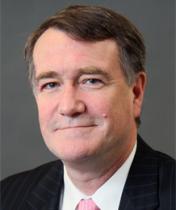Abstract
Following a brief overview in Part I.A of the overall system to prevent money laundering, Part I.B describes the role of the private sector, which is to identify customers, create a profile of their legitimate activities, keep detailed records of clients and their transactions, monitor their transactions to see if they conform to their profile, examine further any unusual transactions, and report to the government any suspicious transactions. Part I.C continues the description of the preventive measures system by describing the government's role, which is to assist the private sector in identifying suspicious transactions, ensure compliance with the preventive measures requirements, and analyze suspicious transaction reports to determine those that should be investigated.
Parts I.D and I.E examine the effectiveness of this system. Part I.D discusses successes and failures in the private sector's role. Borrowing from theory concerning the effectiveness of private sector unfunded mandates, this Part reviews why many aspects of the system are failing, focusing on the subjectivity of the mandate, the disincentives to comply, and the lack of comprehensive data on client identification and transactions. It notes that the system includes an inherent contradiction: the public sector is tasked with informing the private sector how best to detect launderers and terrorists, but to do so could act as a road map on how to avoid detection should such information fall into the wrong hands. Part I.D discusses how financial institutions do not and cannot use scientifically tested statistical means to determine if a particular client or set of transactions is more likely than others to indicate criminal activity. Part I.D then turns to a discussion of a few issues regarding the impact the system has but that are not related to effectiveness, followed by a summary and analysis of how flaws might be addressed.
Part I.E continues by discussing the successes and failures in the public sector's role. It reviews why the system is failing, focusing on the lack of assistance to the private sector in and the lack of necessary data on client identification and transactions. It also discusses how financial intelligence units, like financial institutions, do not and cannot use scientifically tested statistical means to determine probabilities of criminal activity. Part I concludes with a summary and analysis tying both private and public roles together.
Part II then turns to a review of certain current techniques for selecting income tax returns for audit. After an overview of the system, Part II first discusses the limited role of the private sector in providing tax administrators with information, comparing this to the far greater role the private sector plays in implementing preventive measures. Next, this Part turns to consider how tax administrators, particularly the U.S. Internal Revenue Service, select taxpayers for audit, comparing this to the role of both the private and public sectors in implementing preventive measures. It focuses on how some tax administrations use scientifically tested statistical means to determine probabilities of tax evasion. Part II then suggests how flaws in both private and public roles of implementing money laundering and terrorism financing preventive measures might be theoretically addressed by borrowing from the experience of tax administration. Part II concludes with a short summary and analysis that relates these conclusions to the preventive measures system.
Referring to the analyses in Parts I and II, Part III suggests changes to the current preventive measures standard. It suggests that financial intelligence units should be uniquely tasked with analyzing and selecting clients and transactions for further investigation for money laundering and terrorism financing. The private sector's role should be restricted to identifying customers, creating an initial profile of their legitimate activities, and reporting such information and all client transactions to financial intelligence units.
Keywords
Public Institutions, Terrorism includes Homeland Security, Crime
Publication Date
2011
Document Type
Article
Place of Original Publication
Duke Journal of Comparative & International Law
Publication Information
21 Duke Journal of Comparative & International Law 503 (2011)
Repository Citation
Gordon, Richard K., "Losing the War Against Dirty Money: Rethinking Global Standards on Preventing Money Laundering and Terrorism Financing" (2011). Faculty Publications. 148.
https://scholarlycommons.law.case.edu/faculty_publications/148

